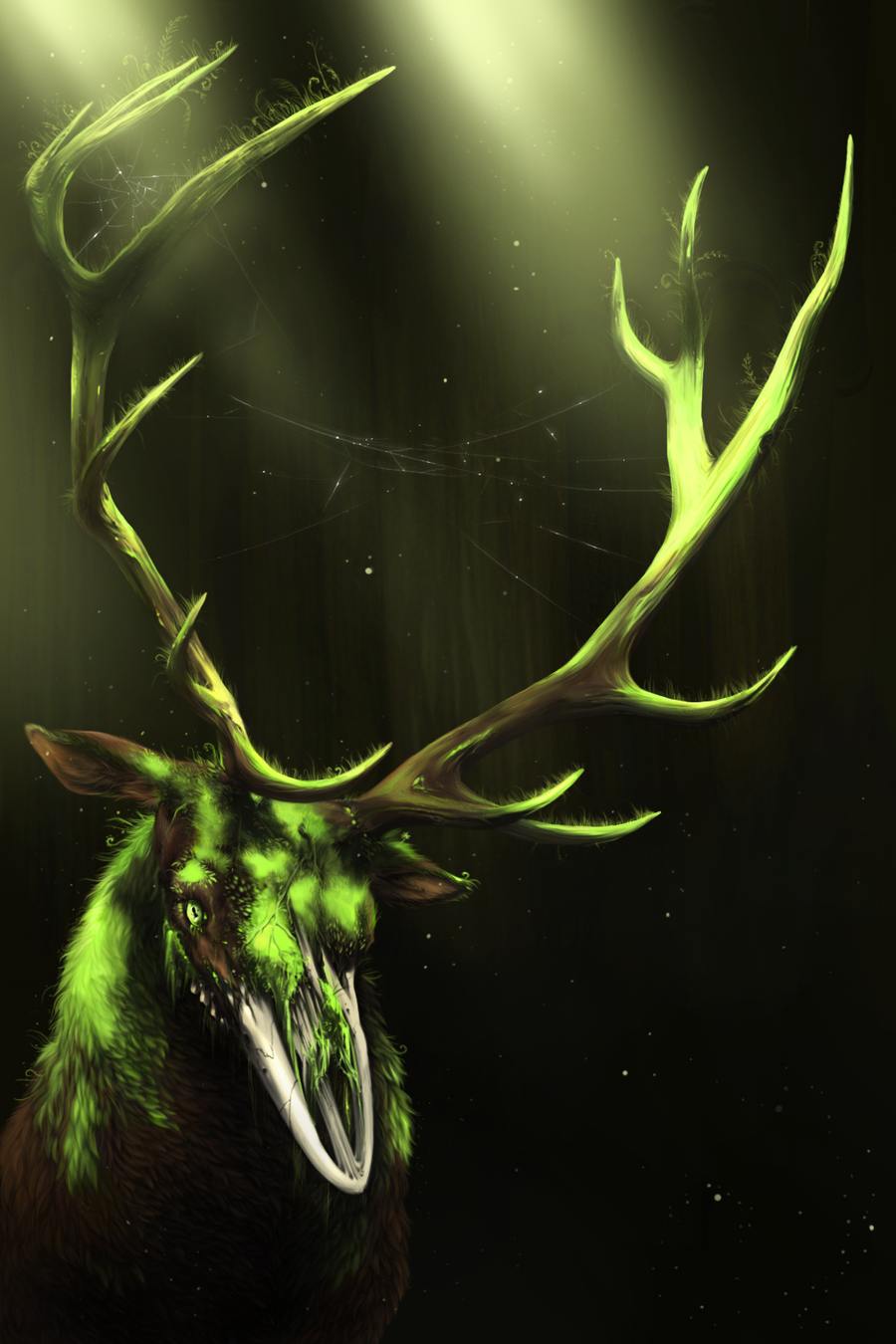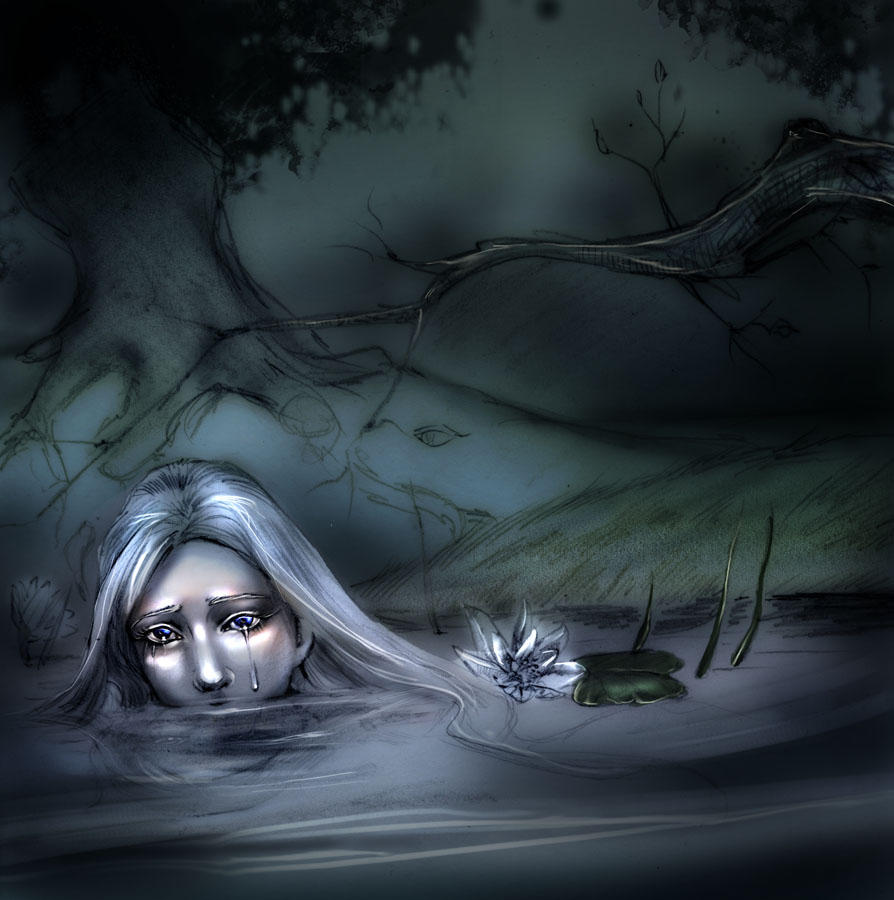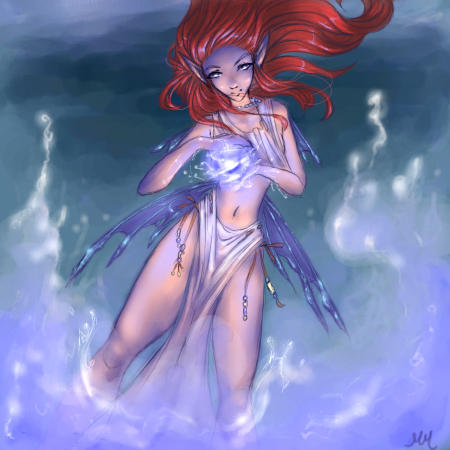((Just putting myth and such in.))
Origin of the fea: Part 1

Dead
One popular belief was that they were the dead, or some subclass of the dead. The banshee, or the correct name "bean sí" or "bean shìth", which both mean "fairy woman", is sometimes described as a ghost. The northern Cauld Lad, though described as a murdered boy, is also described as a household sprite like a brownie, much of the time a Barghest or Elf. One tale recounted a man caught by the fairies, who found that whenever he looked steadily at one, the fairy was a dead neighbor of his. This was among the most common views expressed by those who believed in fairies, although many of the informants would express the view with some doubts.
------------------------------------------
Origin of the fea: Part 2
<img src="http://fc01.deviantart.net/fs30/i/2008/165/1/0/Birth_Of_A_Water_Sprite_by_JinxedKitten.jpg">
Elementals
In alchemy in particular they were regarded as elementals, such as gnomes and sylphs. This is uncommon in folklore, but accounts describing the fairies as "spirits of the air". This also speaks to the rare genasi that we can find about here and there. It bolds that creatures of magical nature could emulate or simulate the nature of elements considering the infusions they could be delt.
------------------------------------------
Origin of the fea: Part 3

Demoted angels
A third belief held that they were a class of "demoted" angels. One popular story held that when the angels revolted, the Gods ordered the gates shut, those still in heaven remained angels, those in hell became devils, and those caught in between became fairies. Others held that they had been thrown out of heaven, not being good enough, but they were not evil enough for hell. This may explain the tradition that they had to pay a "teind" or tithe to Hell. As fallen angels, though not quite devils, they could be seen as subject of the Devil.
------------------------------------------
Origin of the fea: Part 4

Demons
A fourth belief was the fairies were demons entirely. The very first hobgoblin, once a friendly household spirit, became a wicked goblin. Dealing with fairies was in some cases considered a form of witchcraft or dark magic and punished as such in this era. The belief in their angelic nature was less common than that they were the dead, but still found popularity.
------------------------------------------
Origin of the fea: Part 5

Humans
A less-common belief was that the fairies were actually humans once upon a time. One folktale recounts how a woman had hidden some of her children from the Gods, and then looked for them in vain, because they had become the hidden people, the fairies. This is parallel to a more developed tale than I can recount myself.
------------------------------------------
Origin of the fea: Part 6
Babies' laughs
A rare and very short fable about the orign of the fea, "When the first baby laughed for the first time, his laugh broke into a million pieces, and they all went skipping about. That was the beginning of fairies."
------------------------------------------
Origin of the fea: Part 7

Deities
Many of the tales of the Tuatha Dé Danann refer to these beings as fairies, though in more ancient times they were regarded as Goddesses and Gods. The Tuatha Dé Danann were spoken of as having come from the north of the world, or, in other sources, from the sky. After being defeated in a series of battles with other Otherworldly beings, and then by the ancestors of the current people in the world, they were said to have withdrawn to the sídhe or fairy mounds, where they lived on in our imagination as "fairies."
Origin of the fea: Part 1

Dead
One popular belief was that they were the dead, or some subclass of the dead. The banshee, or the correct name "bean sí" or "bean shìth", which both mean "fairy woman", is sometimes described as a ghost. The northern Cauld Lad, though described as a murdered boy, is also described as a household sprite like a brownie, much of the time a Barghest or Elf. One tale recounted a man caught by the fairies, who found that whenever he looked steadily at one, the fairy was a dead neighbor of his. This was among the most common views expressed by those who believed in fairies, although many of the informants would express the view with some doubts.
------------------------------------------
Origin of the fea: Part 2
<img src="http://fc01.deviantart.net/fs30/i/2008/165/1/0/Birth_Of_A_Water_Sprite_by_JinxedKitten.jpg">
Elementals
In alchemy in particular they were regarded as elementals, such as gnomes and sylphs. This is uncommon in folklore, but accounts describing the fairies as "spirits of the air". This also speaks to the rare genasi that we can find about here and there. It bolds that creatures of magical nature could emulate or simulate the nature of elements considering the infusions they could be delt.
------------------------------------------
Origin of the fea: Part 3

Demoted angels
A third belief held that they were a class of "demoted" angels. One popular story held that when the angels revolted, the Gods ordered the gates shut, those still in heaven remained angels, those in hell became devils, and those caught in between became fairies. Others held that they had been thrown out of heaven, not being good enough, but they were not evil enough for hell. This may explain the tradition that they had to pay a "teind" or tithe to Hell. As fallen angels, though not quite devils, they could be seen as subject of the Devil.
------------------------------------------
Origin of the fea: Part 4

Demons
A fourth belief was the fairies were demons entirely. The very first hobgoblin, once a friendly household spirit, became a wicked goblin. Dealing with fairies was in some cases considered a form of witchcraft or dark magic and punished as such in this era. The belief in their angelic nature was less common than that they were the dead, but still found popularity.
------------------------------------------
Origin of the fea: Part 5

Humans
A less-common belief was that the fairies were actually humans once upon a time. One folktale recounts how a woman had hidden some of her children from the Gods, and then looked for them in vain, because they had become the hidden people, the fairies. This is parallel to a more developed tale than I can recount myself.
------------------------------------------
Origin of the fea: Part 6
Babies' laughs
A rare and very short fable about the orign of the fea, "When the first baby laughed for the first time, his laugh broke into a million pieces, and they all went skipping about. That was the beginning of fairies."
------------------------------------------
Origin of the fea: Part 7

Deities
Many of the tales of the Tuatha Dé Danann refer to these beings as fairies, though in more ancient times they were regarded as Goddesses and Gods. The Tuatha Dé Danann were spoken of as having come from the north of the world, or, in other sources, from the sky. After being defeated in a series of battles with other Otherworldly beings, and then by the ancestors of the current people in the world, they were said to have withdrawn to the sídhe or fairy mounds, where they lived on in our imagination as "fairies."